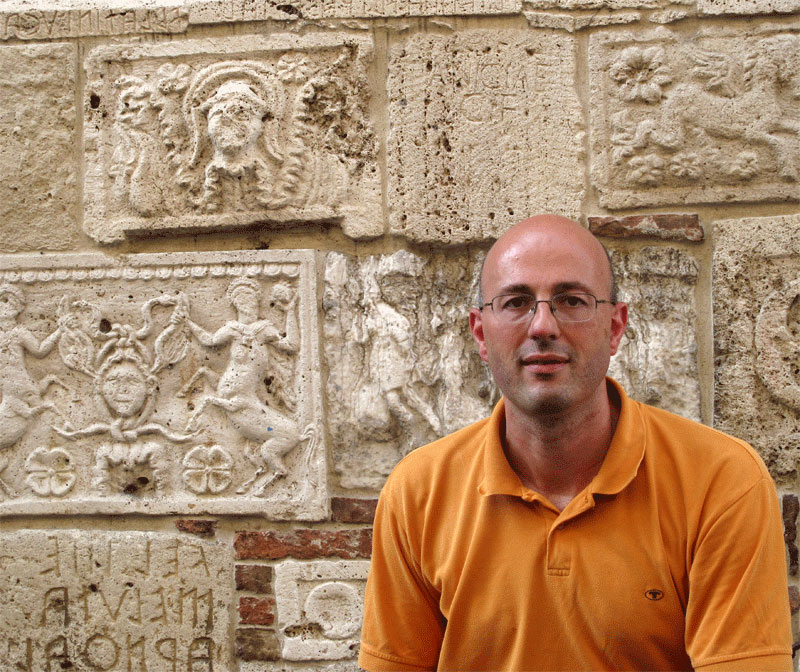Affiliation: Columbia University

Francesco de Angelis is Associate Professor of Roman Art and Archaeology with Columbia University, where he is also the Vice-Director of the Center for the Ancient Mediterranean and Associate Director of the Center for Archaeology. He holds his degrees in Classics and Classical Archaeology from the University of Pisa. His area of specialization is Etruscan and Roman art and archaeology, and he has received numerous awards from his research and teaching. He has worked on various cataloguing projects of Etruscan and Roman materials, has published widely, and is Co-Editor of Etruscan News and Oebalus. Prof. de Angelis is an AIA Thompson Lecturer for 2022/2023.
Etruscan incense-burners often include in their shapes components that make more or less explicit reference to specific properties of the artifacts themselves. These components, which can be either abstract or figural, appear to underscore the aspects of gravity, lightness, and equilibrium. This paper argues that such aspects are related to the actual functions of the incense-burners. Not only wrere they used in game practices that entailed balancing: more generally, the upward movement of incense smoke was very consciously integrated in the way incense-burners were experienced by ancient viewers. Thus, their formal components served as explicit visual commentaries on the perceived nature of these objects.
The excavations carried out at Hadrian’s Villa by the Advanced Program of Ancient History and Art (APAHA Tibur), a joint project of Columbia University and Sapienza University of Rome, have revealed, in the area of the so-called Macchiozzo, a complex of residential buildings of the Hadrianic period. Virtually unknown to antiquarians and modern scholars, these buildings – with their architectural typologies and their floor, wall and ceiling decorations — disclose new perspectives on the functioning of the villa. The lecture will present the main results of the APAHA excavations, including the remarkable phase of late antique usage of the Macchiozzo complex.
Representations of architecture on Roman coins have long been studied by scholars interested in retrieving information about ancient monuments, especially those ones that are partially or totally lost. Recent scholarship has shown that numismatic images cannot be treated as straightforward and objective sources about the appearance of these monuments. However, they remain a significant witness of the reception of such buildings. In other words, they can give us an idea of how a temple or an arch were viewed, or were supposed to be viewed—which aspects of their architecture, which details of their decoration were deemed important and worthy of special focus. The talk will address the methodological implications of this approach with the help of selected cases. In particular, it will argue that we need to achieve an adequate understanding of the dynamics of attention in order properly to appreciate the way in which architectural images on coins functioned in antiquity.